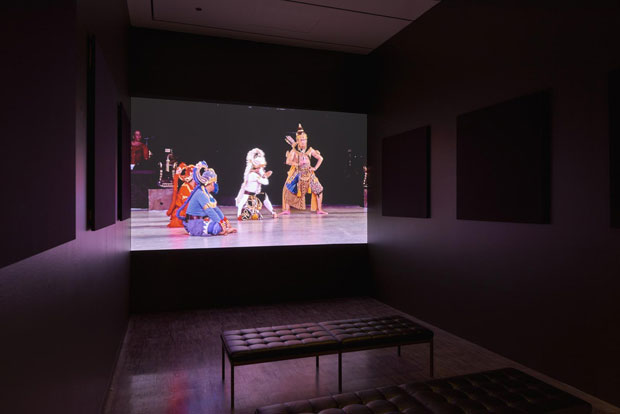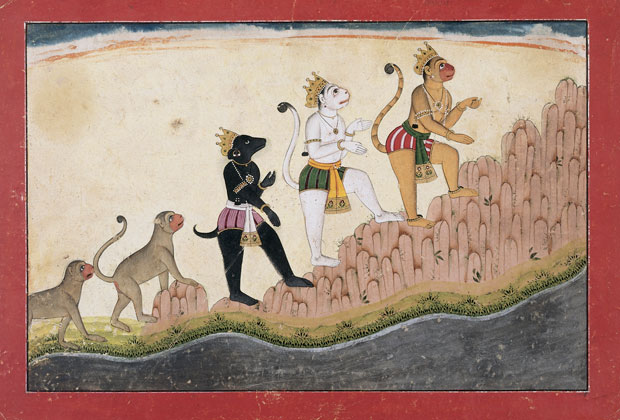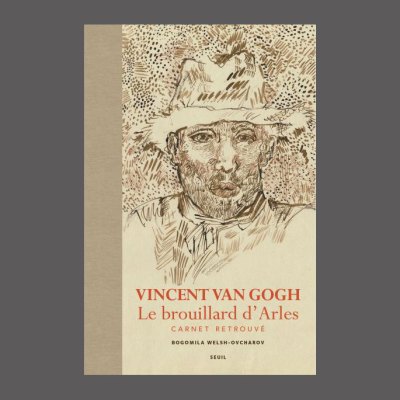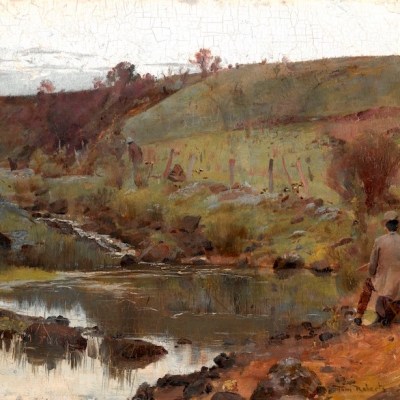In India and across the Indian diaspora, just about everyone knows the Rama epic the way a Western reader might know the Odyssey. Except that the Rama story is arguably even richer and better. Forrest McGill, curator at the Asian Art Museum in San Francisco, has taken on an epic subject and staged a show to match it, bringing together much of the best Rama-inspired art ever made in India and across South Asia. The big galleries are crammed with top-quality art spanning the 5th century to today, and ranging from ancient stone sculptures and carved wooden architraves to exquisite miniature paintings, and screens playing extracts from rather spicy Bollywood movies and Indian TV serials.
Installation view of ‘The Rama Epic: Hero, Heroine, Ally, Foe’. Photo courtesy the Asian Art Museum, San Francisco

The usual name for the epic is the Ramayana, ‘Rama’s Journey’. At its most basic, the plot tells how the royal (and divine) hero Rama saves his beautiful wife Sita from the clutches of wicked and debauched demon Ravana, with help from the monkey Hanuman and loyal supporters. Rama and his allies do the difficult but morally right thing to restore the threatened world order and ensure peace and stability. No wonder it has remained relevant and contemporary, and inspired committed art patronage from not just Hindu rulers but Buddhists, Jains, Muslims and Christians too. An illustrated page from a Persian translation, commissioned by Emperor Akbar at Agra in 1594, shows the demon Ravana’s brother sensibly changing sides to support Rama; a splendidly vivacious wooden Hanuman was created in Bali for the Dutch colonial pavilion of the Paris Exposition Universelle of 1900.
Hanuman, Angada, and Jambavan climb Mount Mahendra. (c. 1720), India, western Pahari region, Himachal Pradesh state. Photograph © Rainer Wolfsberger

This exhibition is dealing with a much-loved epic that was first told aurally about 2,500 years ago, enriched with deviations and local colour, and then written down in numerous versions over the centuries, each imbibed with its author’s own philosophy. McGill wisely eschews any attempt to skim through the story start to finish. Instead, he has created an innovative and thought-provoking structure, dividing the show into four sections devoted to Rama, Sita, Hanuman and Ravana. In each, he explores the character’s personality and how they have been shaped and interpreted by artists and their patrons. The museum’s excellent website develops this further.
Rama refuses his brother Bharata’s entreaties to return. Page from the Mewar Ramayana (1649–53), Sahibdin. The British Library. Photograph © Asian Art Museum of San Francisco

A page from the great Mewar Ramayana, made in 1649–53 for the Udaipur ruler Maharana Jagat Singh, depicts Rama’s morally guided sense of kinship when he dutifully honours his father’s misguided appointment of Rama’s brother to the throne, doubtless knowing that right will prevail in the end. (This and five further leaves from this manuscript form one of McGill’s loan coups, as none have come to the Americas before.)
In considering a wide variety of depictions of Sita, which often show her forlorn and isolated, McGill touches on key dilemmas of female sanctity: did Ravana defile her by touching her when he abducted her; is she is real or just an illusion? As for beloved Hanuman, a bold image made for sale in the 19th-century Kolkata markets show him ripping open his skin to reveal Rama and Sita in his heart, the personification of loyalty.
Sita in the forest grove (left); Rama and Lakshmana stricken (right). Folio from the ‘Shangri’ Ramayana (c. 1700–10). India; Bahu, Jammu and Kashmir. Los Angeles County Museum of Art

More prosaically, a busy scene of Ravana battling with Rama, painted around 1750–1800 on cloth in Tamil Nadu for export to Indonesia, has intriguing vignettes of Rama’s soldiers taking their chopped-off legs to be fixed on again by doctors sitting calmly beneath leafy trees. The image of Rama’s triumph in that battle and his subsequent return home to take his throne lives on today as the great Hindu festivals Dussehra and Diwali.
Rama’s concerns for Sita. Page from Bhanudatta’s Rasamanjari (c. 1720), India; Jammu and Kashmir state. Victoria and Albert Museum

‘The Rama Epic: Hero, Heroine, Ally, Foe’ is at the Asian Art Museum, San Francisco, until 15 January 2017.



